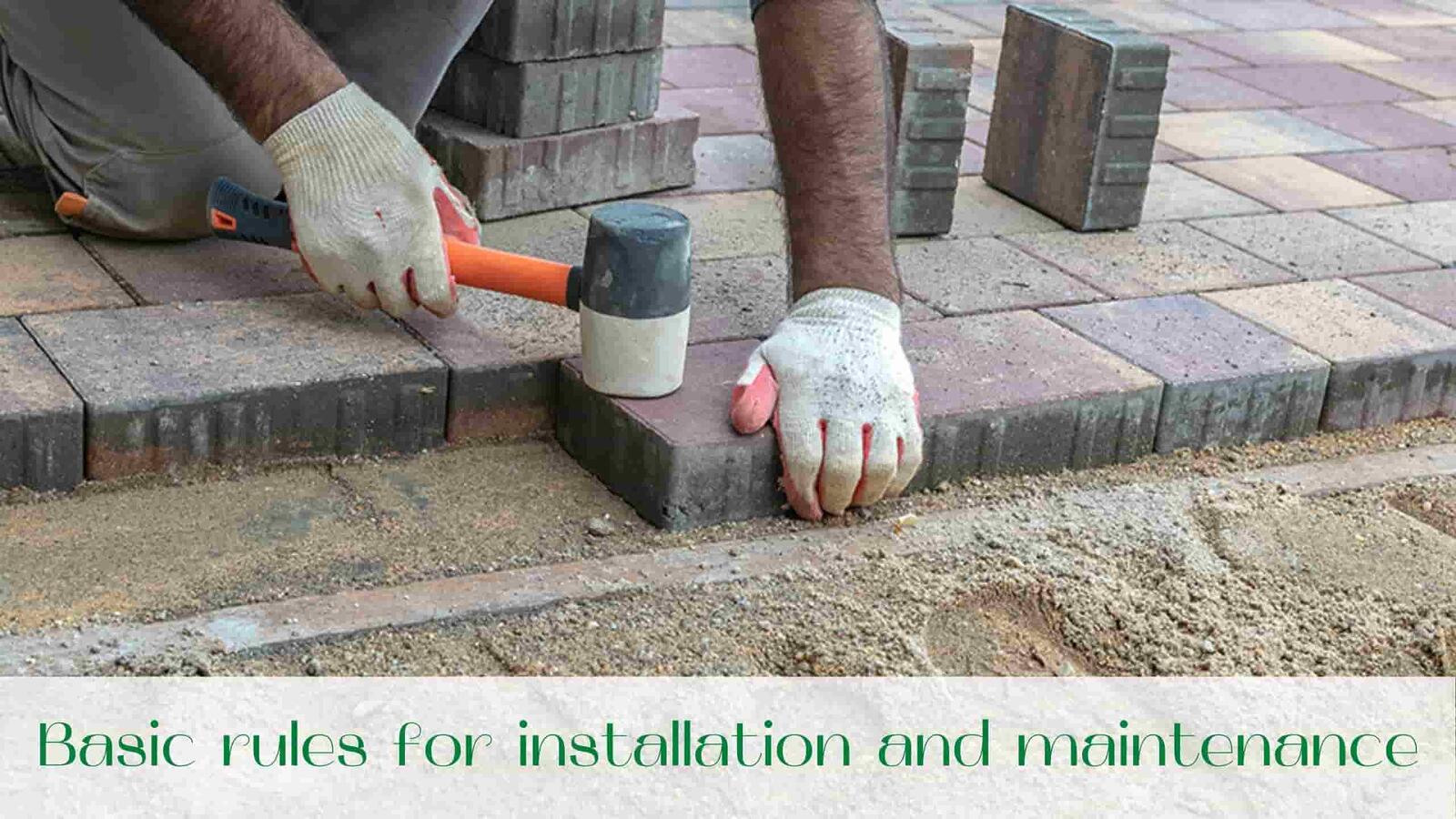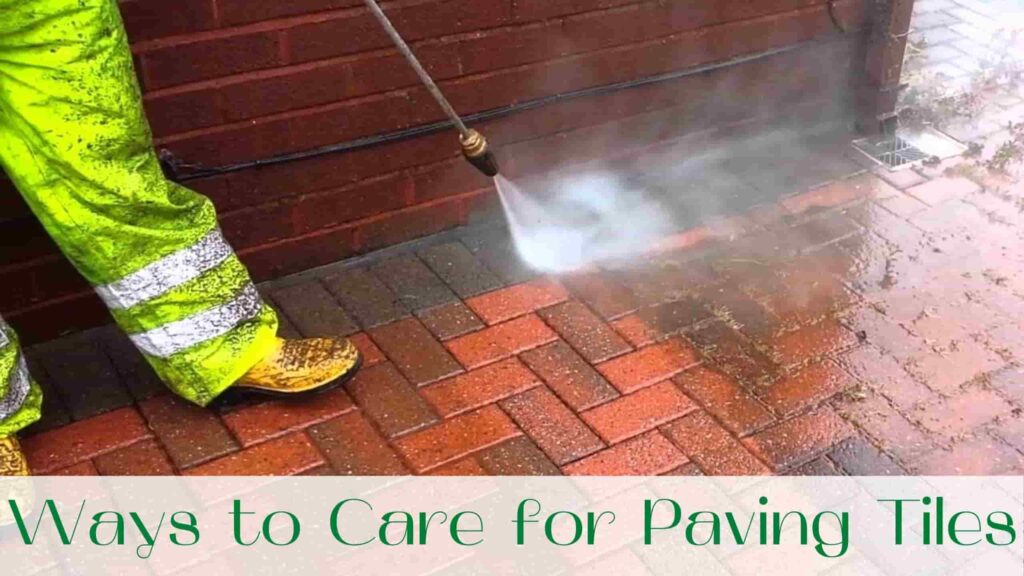
Paving tiles in Toronto are durable and reliable coating, resistant to temperature fluctuations, humidity and other external factors. It is used at arrangement of pedestrian zones, parking places, platforms, stops. In order to extend the service life of a paving tile and preserve its decorative qualities, it is necessary to avoid factors that prematurely destroy it, to observe the conditions of operation and maintenance.
Table of Contents
Basic rules for installation and maintenance of paving tiles in Toronto
The strength and durability of a tile coating can only be guaranteed if a set of conditions are met:
- tiles are selected according to the planned loads and climatic conditions;
- all technological rules have been observed during installation;
- the gutter is properly arranged;
- the operating conditions recommended for this material are complied with.
When laying paving tiles in Toronto, care must be taken to ensure that the joints do not get weedy. For this purpose, before installing the tile material on the prepared base put a geotextile, thick polyethylene film, roofing felt. Regular maintenance measures, to which they relate, significantly extend the service life of the tile coating:
- Regular preventive cleaning using special products. Able not only to extend the life of the coating, but also to maintain the brightness of the color. Such cleaning is recommended in spring after snow melting and in autumn. Preventive cleaning consists in washing the tiles and cleaning the seams.
- Reducing water absorption with water-repellent treatment. Such compositions do not let water inside the products. This is very important, especially for winter time. At negative temperatures, the water that has entered the capillaries of concrete tiles freezes, expands, creates internal pressure and gradually destroys the product from the inside. Water-repellent impregnation, which not only protects the material from moisture, but also makes its color more saturated, retains its characteristics for 10 years. At the end of this period, the treatment should be repeated. Another way to renew the surface of paving tiles is to apply special water-based, alkyd or polyurethane rubber paints. Alkyd dyes harden the surface, while polyurethane paints do not peel off the concrete surface even at -30 °C.
- Load control. Significant exceeding of the load levels, e.g. a heavy truck driving over a tile on a pedestrian walkway, leads to material breakage. Small but constant exceeding of the planned loads deforms the paving elements, increases their mobility and impairs the correct water flow.
- Control over the use of cleaning agents and tools. Experienced specialists recommend to use for regular maintenance and cleaning of heavy soiling only those chemical agents that are permitted by the regulations on material maintenance. Heavy and sharp tools are not permitted to be used in winter to fight ice and dense snow.
Ways to Care for Paving Tiles
All methods can be divided into three main categories:
- Mechanical. It is carried out by means of various tools – shovels, scrapers, spatulas. This method is usually used in winter to clean the surface from ice and snow.
- Chemical. All chemical agents are applied only to wet coating. Concentrated chlorine formulations can irreversibly change the colour of products. Therefore it is recommended to try them on a small, unobtrusive area before using the chemical agents.
- Wet or dry cleaning. This consists of cleaning the surface from dust, dirt, debris with plastic lint brushes and a pressure jet of water. This is the main method used for regular maintenance. Specialists do not recommend washing the tiles with water supplied at too high a pressure, as a high-pressure jet can destroy the material.

How to properly clear paving tiles in winter from ice and snow.
It is strictly forbidden to use metal-tipped shovels and other similar tools for cleaning tiles in winter. They can destroy the material surface, which is particularly sensitive to mechanical influences at negative temperatures. For cleaning it is recommended to use shovels with wooden and plastic working parts. Paving tiles touch the roadway from ice and snow are cleaned with a brush or a sidewalk sweeper.
To prevent the formation of ice and snow it is recommended to use anti-freeze reagents approved for coloured pavement tiles. Cheap, low-quality anti-freeze reagents change the original color of products for the worse. It will no longer be possible to restore the original decorative appearance of the coating. It is prohibited to sprinkle paths and platforms with salt. It has a destructive effect on the surface and inner structure of the tile, in which salt penetrates with water.
From time to time it is necessary to sprinkle the joints between the tiles with sand and replace damaged elements.

Paving tile care in the summertime
In summer, pavement tiles are cleaned of dust, dirt with brushes and water supplied under pressure. The following methods are used to remove complex dirt:
- Chewing gum. It can be removed with a special detergent or simply removed with a scraper and the rest can be cleaned with a brush.
- Gasoline and oil stains. To remove them, special decomposition agents are used. If gasoline and oil stains are sealed between the joints, the dirty sand is removed and filled with clean sand. Machine oil must be washed immediately as it affects the structure of the pavement tiles. Sand or sawdust should be poured onto the fresh spot and then gently removed.
- Tire tracks. They are removed with household detergents dissolved in hot water.
- Rust stains. In this case, the surface is cleaned with a concrete surface cleaner containing hydrochloric acid.
- Soot. Removed with a mixture of detergent and bleach dissolved in water or soapy water.
- Blood, wine. Special bleaching agents are used to combat these hard-to-remove stains, which can have a negative impact on health. Therefore, they are used with latex gloves and protective goggles. After cleaning, the surface is treated with water supplied under heavy pressure.
Make sure that no mortar or concrete mixes get on the tiles. It is practically impossible to clean the coating without damaging the surface. A mechanical method is used to remove such stains. When carrying out construction work after tile laying, it is necessary to protect the tiles with a dense polyethylene film. Tip! Freshly spilled liquids should not be rubbed with a cloth immediately. It is better to use an adsorbent with the following functions: sand, sawdust and even cat filler. Once the adsorbent has absorbed the liquid, it should be gently swept off the surface.

How to remove the pickles from the pavement tiles
The salts are white salt deposits that can appear on the surface of paving elements for several reasons. It is:
- Presence of salts in building materials and water used in manufacture of products.
- Violation of production technology.
- Violation of the rules of storage of products for paving. High humidity in storage areas leads to saturation of products with water and salts dissolved in it.
If there are no white spots on the purchased tiles, they are treated with a weak solution (5%) of acetic, citric or orthophosphoric acids for preventive purposes. After acid treatment, the products are applied hydrophobisator.
Salt plaque not only spoils the appearance of paving elements, but also leads to the gradual destruction of the structure. Therefore, if there are any salts, they must be quickly removed.
How to get rid of the grass between the pavement tiles
If no measures have been taken against weed germination during the installation of the coating, we will have to fight against it every year in summer.
How to remove grass between paving tiles are the main ways:
- Pull out weeds with root, cut as low as possible with scissors or other special tools.
- Pour boiling water over the seams. Alternatively, burn out with a blowtorch. But in the latter case, the surface of coloured tiles that are not designed for high temperatures can suffer.
- Rinsing the seams with water supplied under pressure. Liquid rinses out seeds caught between tile elements.
- In case of strong spread of weeds, herbicides are used. When using them, observe the specified dosages, otherwise you can cause damage to useful plants planted nearby.
The surface of a tile coating may be negatively affected by biologically active factors, such as moss and fungus. They gradually destroy the artificial stone and reduce its service life.
How to remove moss and fungus from paving tiles:
- to mechanically remove moss, fungus and lichen;
- moisten the surface;
- wipe the surface witch chlorine-containing substances dissolved in water;
- rinse the surface with water.
Preventive maintenance measures for tile coating include treatment with lawn solutions containing iron sulphates and ammonium. They prevent the appearance of moss, lichen and fungus.
Regular tile maintenance does not require any special time and financial expenditures. However, with the help of simple measures it is possible to significantly extend the working period of a paving tile and preserve its original appearance as long as possible.
